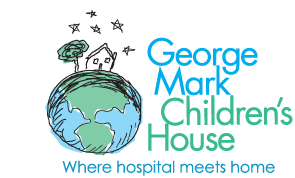 George Mark Children’s House is a non-profit organization based in San Leandro, California, and the first freestanding pediatric palliative care center to open in the United Statesl. The facility has been a leader in the pediatric palliative care movement since its inception in 2004.
George Mark Children’s House is a non-profit organization based in San Leandro, California, and the first freestanding pediatric palliative care center to open in the United Statesl. The facility has been a leader in the pediatric palliative care movement since its inception in 2004.
George Mark Children’s House exists to serve families with children who have a serious medical illness and who are seeking family-centered medical care that emphasizes quality of life in a compassionate, supportive atmosphere.
I had the opportunity to talk with Teri Rose, the Medical Outreach and Community Relations Manager for George Mark for a very enlightening and touching interview about the pediatric palliative care movement.
Dana Sitar: Can you give a general overview of the George Mark Children’s House for our readers who are unfamiliar with the facility?
Teri Rose: A big part of our overall mission is — like you — changing the conversation. We’ve been open since 2004, and when we first opened a lot of people were confused about what we do. They would ask”Why do you have a place where children can go to die? Why aren’t you trying to save their lives?” But really, we’re not about dying, we’re about living. And we’re trying to change that perception. We use the comparison that we help people “birth people to the other side”. There is so much positivity around child birth, beautiful spaces, etc, but your child is dying, everyone runs the other way.
A big part of my job is speaking, trying to get people in the medical field and the general public to change the way we look at death. So many physicians don’t want to talk to families, especially when dealing with children, about the end of life. The medical system is all about saving the life, not the quality of life. We focus on creating quality of life for children and families from the time that they’re diagnosed. We offer things like therapy, last portraits, bereavement work, scrapbooking, memory making for families, etc., things that help us to have that conversation the entire time.
Dana: Do you consider your facility a place for children to “go to die”?
Teri: We do transitional and respite care. We work off of a concept that is fairly new; we were the first pediatric palliative care facility to open in this country, and we based our model off of what we saw already happening in the UK.
The kids who come stay with us get sick all the time, though they don’t need to be in the hospital. We allow children to leave the hospital and finish out their care here instead of staying in a hospital, which is an awful place for children and families to be.
For example, we have families who come in with babies. When an infant is diagnosed with a life-threatening illness, parents often don’t get the chance to be a family. They come to us, and they get to be a family, whether it’s for a day or a month or a few months. If they were in the hospital they wouldn’t be able to do that.
Families who come to us often tell us that they feel abandoned by their medical workers when it comes to dealing with death, because people in medicine don’t have the tools to deal with the end-of-life. Especially with children — most people in internal medicine don’t normally deal with children, so it’s very difficult for them to have that conversation with families. We have the conversation with families all along.
Dana: What is the distinction between pediatric palliative care and “hospice care?”
Teri: First off, the language matters. The way we talk about things changes the way that people feel about them. “Hospice” is considered part of the end-of-life, something that happens when someone is dying. With palliative care, we can have the conversation all along. We use language [about medicines, treatments, conditions] the whole time, so that it’s not associate only with death. We have that conversation constantly with the family, and we offer support services the whole way through.
Palliative care is very much about coordinative care. A lot of these children are dealing with multiple specialists, and we help bridge the gap between those.

Teri Rose, the Medical Outreach and Community Relations Manager for George Mark, Jenny Blechman, MD (Stanford HPM Fellow), Barbara Beach, MD, Founder of GMCH and Fernando Kawai, MD (Stanford HPM Fellow)
Credit: http://palliativejournal.stanford.edu/
Dana: Do you start to prepare families for the possible death of their child as soon as they come in?
Teri: Bereavement services are about 18-19 percent of what we do, but we just generally take our cue from the parents, work with their needs. it’s about their goals. Most parents know that their child won’t live into adulthood, and they begin to ask questions, and we are constantly having a conversation about where the child is and what’s going on.
Dana: So, you don’t necessarily try to guide parents towards acceptance.
Teri: No. We never, ever consider it our job to push parents into acceptance. We just talk and listen. Parents just want to be heard. It all really comes down to the conversation. The parent is the one ultimately that has to live with the decisions that they make [regarding end-of-life care]. So it’s up to them, and we’ll support them as long as it’s safe and legal. It’s not our agenda, it’s theirs.
Dana: Do you provide the same care that the child would receive in the hospital?
Teri: Not everything. We are where hospital meets home. We are designed to function like a home with built-in medical care. We don’t run tests, and we don’t do transfusions (just because of the cost of stocking blood).
We do have nurses who are highly skilled to deal with really seriously ill children. People sometimes think that our nurses are just there to hold hands, because they don’t realize all that’s involved in hospice and in managing end-of-life care. But they are highly trained to provide the services that these kids need.
Dana: Are you encouraged by what you see in the media surrounding the end-of-life conversation?
Teri: Our job is keeping it at the forefront, to keep educating people, talking about it over and over and over. And it can be frustrating at times, but just in the 7 years that I’ve been doing this there are so many more articles about palliative care. It’s really nice to see so much in the press about it.
It’s sort of scarier not to have the conversation. So many people, elderly people, die in pain because they don’t have clear directives.
Dana: Is it easier to create advance directives or make healthcare decisions with children, since you are dealing with a parent/guardian, who is used to making decisions for the child?
Teri: No. Because everybody wants to do everything possible to save their child’s life. You have a baby, and you have all these hopes and dreams for that baby, and they’re shattered. I think it’s probably harder with children, because at least as an adult, you’ve lived your life.
Dana: Explain the importance of caring for not only the child who is ill, but also the parents, families, and caretakers surrounding the child.
Teri: Most families these days, both parents work. There are jobs and siblings to deal with, and they have a sick child who requries a huge amount of care. Parents end up playing nurse in addition to all the rest, and there’s a huge amount of burnout. With respite care, families get to take a break, and parents get to be parents and not just the caregiver.
Parents need a break, to recharge their battery. Some parents come to us who have never left their child with anyone before — when they’re that sick, you can’t just get a babysitter.. A break helps marriages stay together, and it helps family relationships. With teenagers, especially, most teens spend time away from their parents, need time to themselves, and they don’t get that when they are home with their parents as their caregivers.
Dana: Is there any charge for families who stay at George Mark?
Teri: We never bill a family. The only criteria for families to stay here is that they’re medically eligible. Some of our services are reimbursed by medicare or private insurance, but we do still rely a lot on funding.
Dana: Is there anything else you’d like to share that I haven’t mentioned?
Teri: I find that there’s a big misconception about what it’s like here. People say to me, “What you do is so sad, how can you do it?” It’s actually a very happy place. We live life here, however long that is. We really are about life, and living it. We don’t focus on death.
Dana: Would you say, then, that your job is actually a lot more rewarding than it is sad, as people believe?
Teri: It’s more rewarding and satisfying than it is sad. I’m so lucky to be here, to get to do this. And the people I work with, you can tell it isn’t for the paychecks. We do it because we love the work and believe in it. We get wonderful support from Executive Director, and we have learned how to support one another when we need it, as well.

 Interview with Teri Rose from George Mark Children’s House
Interview with Teri Rose from George Mark Children’s House





 “Help Me, Helen”
“Help Me, Helen”
 Recovering Cremation Remains After the Los Angeles Fires
Recovering Cremation Remains After the Los Angeles Fires
 “As Tears Go By” by Marianne Faithfull
“As Tears Go By” by Marianne Faithfull














